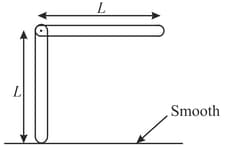DPP 1.2
B M Sharma Physics Solutions for Exercise - DPP 1.2
Simple step-by-step solutions to DPP 1.2 questions of Center of Mass from Chapterwise/Topicwise Daily Practice Problems (DPP) Mechanics - II JEE Main & Advanced. Also get 3D topic explainers, cheat sheets, and unlimited doubts solving on EMBIBE.
Questions from DPP 1.2 with Hints & Solutions
Both the blocks shown in the given arrangement have a horizontal velocity towards right. If be the subsequent acceleration of the center of mass of the system of blocks, then equals,

Two blocks of masses and , respectively, are tied to the ends of a string which passes over a light frictionless pulley. The masses are held at rest at the same horizontal level and then released. If , the distance traversed by the combined center of mass of blocks in is,
A system of two blocks and and a wedge is released from rest as shown in the figure. The masses of the blocks and the wedge are and , respectively. The displacement of wedge when block slides down the plane a distance is (neglect friction),
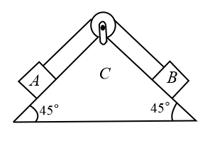
Two men and are standing on a plank. is at the middle of the plank and is at the left end of the plank. The system is initially at rest and masses are as shown in the figure. and start moving such that the position of remains fixed with respect to ground, then meets . Then, the point where meets is located at,
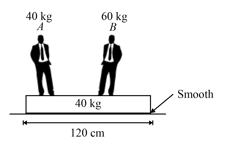
In the figure shown, the system is at rest, initially. Two persons, and , of masses each, move with speeds and , respectively, towards each other on a plank lying on a smooth horizontal surface as shown in the figure. The plank travels a distance of towards right direction in . (Here, and are given with respect to the plank). Then,
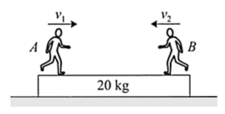
Two particles of equal mass are projected from the ground with speeds and at angles as shown in the figure.
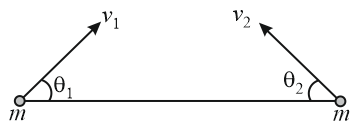
Which of the following are correct?
Two identical rods are joined at one of their ends by a pin. The joint is smooth and rods are free to rotate about the joint. The rods are released in vertical plane on a smooth surface as shown in the figure. The displacement of the joint from its initial position to the final position is (i.e., when the rods lie straight on the ground),
